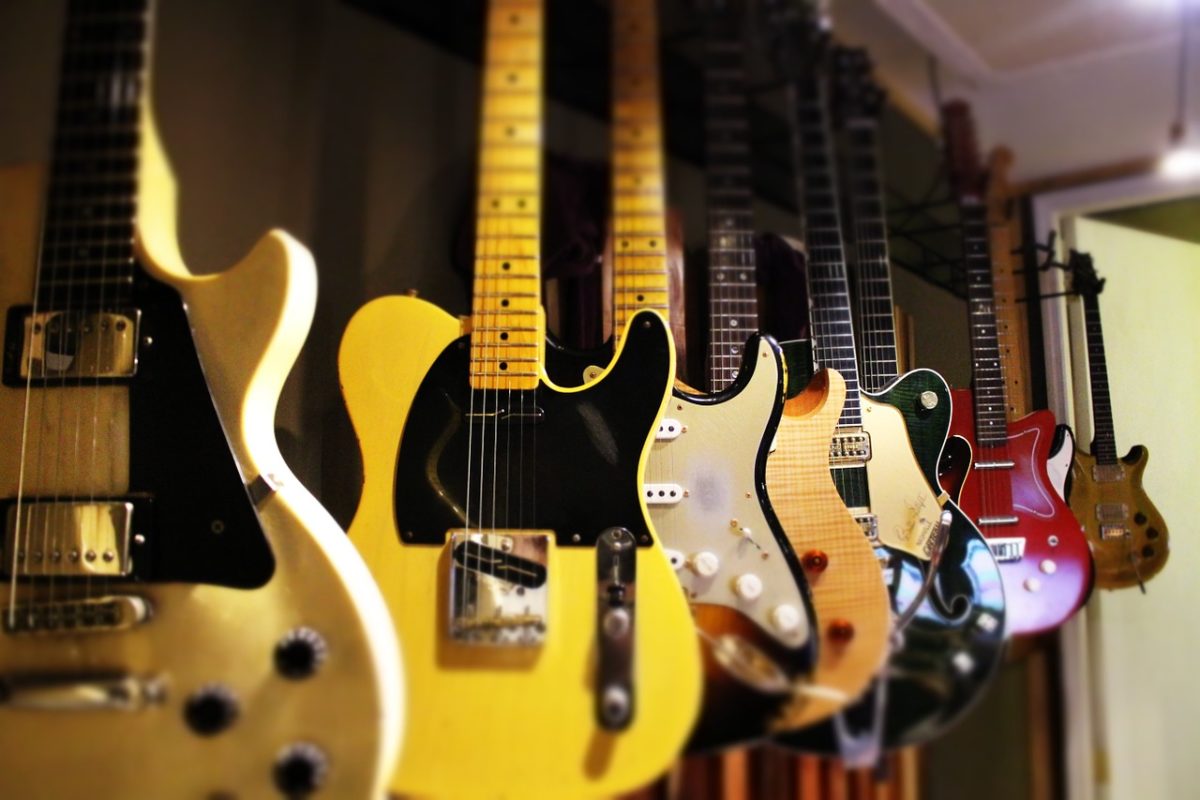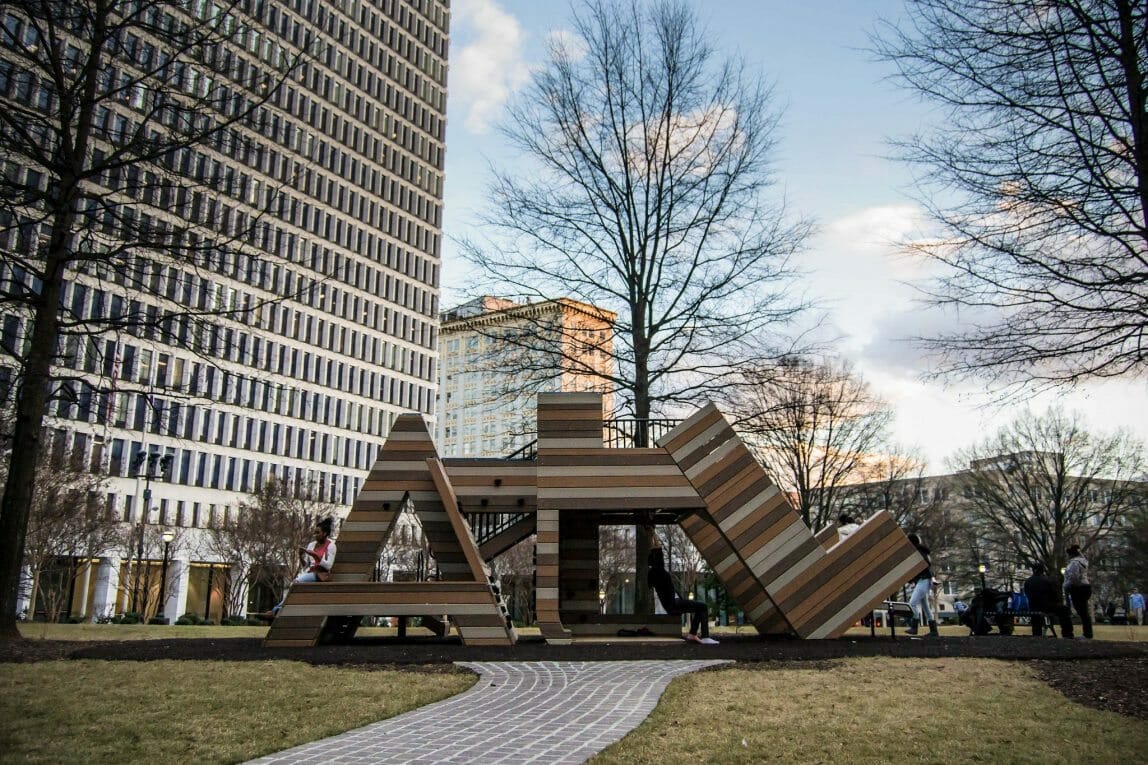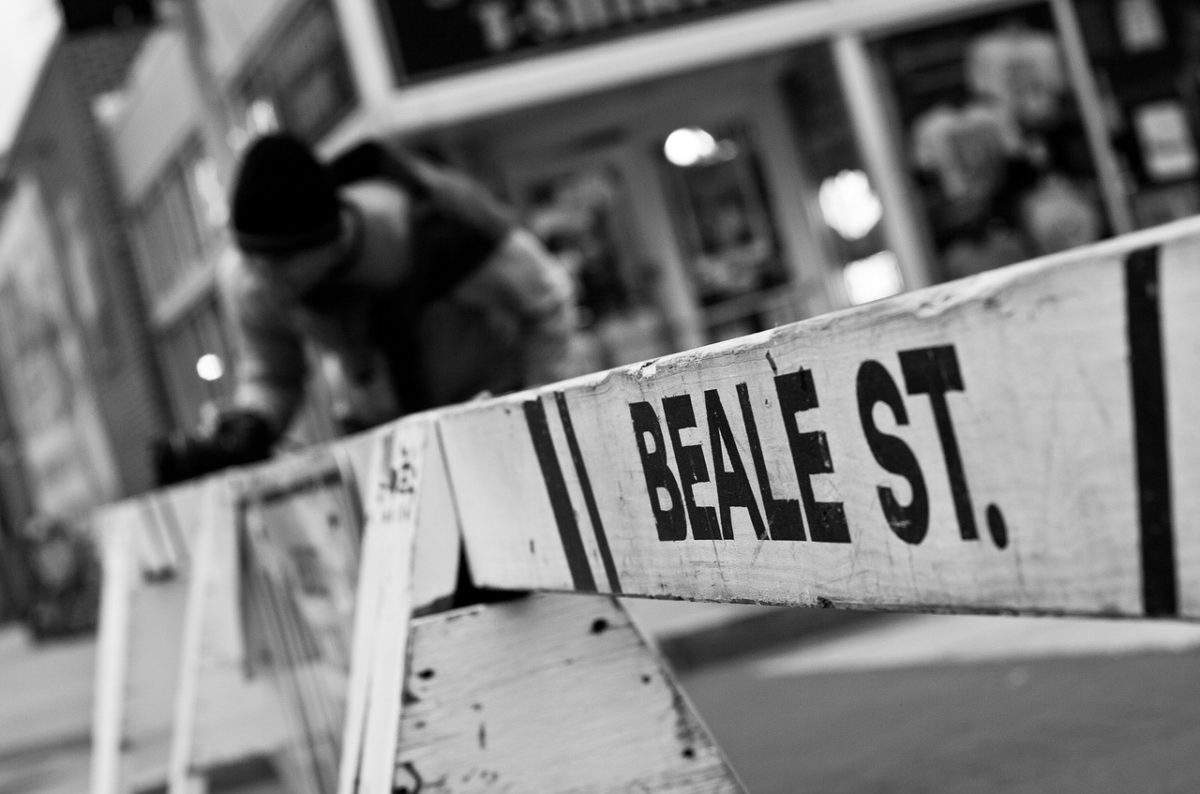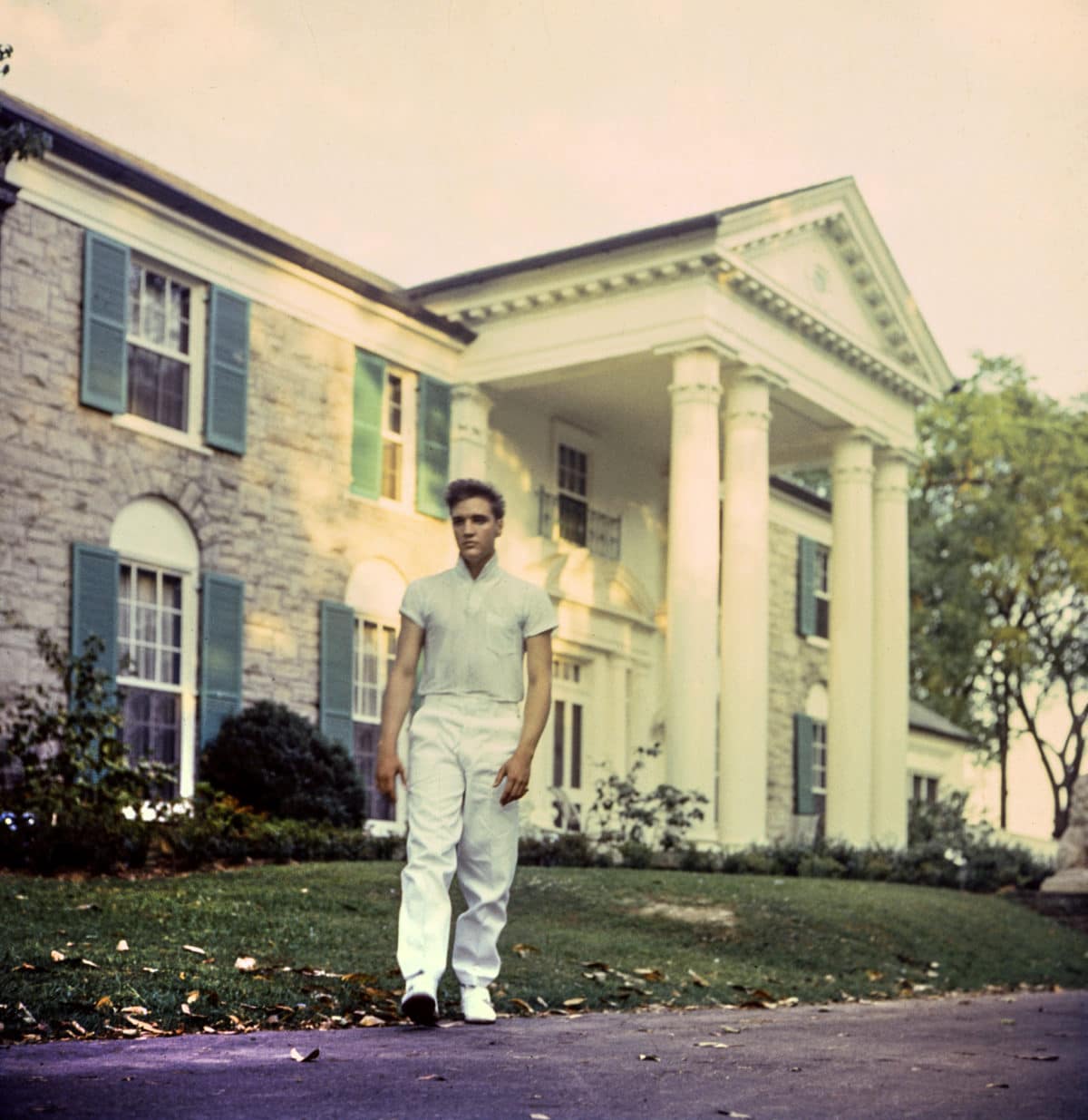Day 1 You'll See:
- NASHVILLE
- The Hermitage
- Grand Ole Opry
- Country Music Hall of Fame
- Bridgestone Arena
- Johnny Cash Museum
Day 2 You’ll See:
- Music Row/Historic RCA Studio B
- Belle Meade Plantation
- TRAVEL TO MEMPHIS - about 3 hours.
Day 3 You’ll See:
- National Civil Rights Museum
- Beale Street
- Sun Studio
- Graceland Tour
- The Cotton Museum
Day 4 You’ll See:
- TRAVEL TO BIRMINGHAM - about 3.5 hours.
- Southern Museum of Flight
- Birmingham Civil Rights Institute
Day 5 You’ll See:
- Birmingham Zoo
- National Voting Rights Museum
- Slavery & Civil War Museum
- TRAVEL TO MONTGOMERY - about 1.5 hours.
Day 6 You’ll See:
- Rosa Parks Museum
- Dexter Avenue King Memorial Baptist Church
- First White House of the Confederacy
- Freedom Rides Museum
- TRAVEL TO ATLANTA - about 2.5 hours.
Day 7 You’ll See:
- National Center for Civil and Human Rights
- World of Coca Cola
- Centennial Olympic Park
- Skyview Atlanta
Day 8 You’ll See:
- Martin Luther King Jr. National Historic Site
- Margaret Mitchell House & Museum
This whirlwind 8-day journey through some of the most important civil rights sites in history will educate, enlighten, and entertain your group during its entirety. You will visit Nashville, Memphis, Birmingham, Montgomery, and Atlanta throughout the entire trip and see such iconic spots as The National Civil Rights Museum, Martin Luther King Jr National Historic Site, Beale Street and so much more!
1
The Hermitage
The Hermitage was once the home of President Andrew Jackson and First Lady Rachel. Guests of the meticulously restored and lovingly maintained Hermitage Plantation, once Jackson’s refuge from the public eye, are afforded a glimpse of the seventh president’s time on the “farm” (as he called it). Meander the breathtaking acreage and gardens, view the enslaved memorials and slavery-related artifacts, and visit what remains of the original historic log home, disassembled and re-purposed by Jackson after moving into the Mansion, as well as the stately tomb where he and his beloved wife, Rachel, are buried.
Grand Ole Opry
While you are here your group will have the chance to see a live 2-hour show, learn about the history of the place, and take a tour. You can see such acts as Trace Adkins, Brad Paisley, and Martina McBride, and more! During a tour, you will walk in the footsteps of country superstars and get an exclusive look at the behind the scenes on the Grand Ole Opry stage. Your group will hear stories of backstage excitement throughout the years, as well as have the varying opportunity to see a star preparing or practicing before a big show! Prepare yourself and your group for a "foot-stomping, hand-clapping, laughing crying good time" as you visit an absolutely essential country music tour stop, Nashville historic icon, and home of American music!
Country Music Hall of Fame
Inside this 350,000 square foot wonder, your group will find exhibits, publications, and various educational programs that highlight the enduring beauty and cultural importance of country music. There are some two million items within the museum, as well as a dynamic state of the art galleries, archival storage, retail stores, and more! Your group will delight in the opportunity to look through the history of the most popular and influential country music stars, the very first to be inducted into the hall of fame being Jimmie Rodgers, Fred Rose, and Hank Williams.
Bridgestone Arena
This 1996-built arena is home to the Nashville Predators and is also the 2-time winner of Pollstar's Arena of the Year. It hosts over 100 events annually, including 40 Predators hockey games, dozens of big-name concerts, and multiple award shows. On any given performance night you can see entertainers such as Thomas Rhett, the Chainsmokers, Kacy Musgraves, Elton John, the Trans-Siberian Orchestra, or WWE Raw (all just examples of shows in 2019 season). There are dozens of bars and concessions stands throughout, with great restaurants like Pete and Terry's Tavern and Barrel House providing excellent arena eats!
Johnny Cash Museum
This list-topping institution, recipient of the coveted AAA GEM rating, has scored endless accolades, including The Tennessee Association of Museum’s 2014 Award of Excellence, and is ranked “#1 Must-Visit Museum for Music Lovers” by Conde Nast, one of “5 Nashville Must-Sees” by Forbes, and by the Huffington Post as one of “22 Reasons You Should Visit Nashville.” Rolling Stone magazine places it in the Top 10 Tennessee Spots for Music Lovers and Money Magazine calls it the “Best Culture Stop in Nashville.”
2
Music Row/Historic RCA Studio B
First built in 1956 by Dan Maddox, RCA Studio B became an essential factor in the development of the production style and technique of 'Nashville Sound' throughout the 1960s. Some of its first big hits included Don Gibson's 'Oh Lonesome Me' and the Browns' 'The Three Bells'. Hitmakers such as Bobby Bare, Waylon Jennings, Willie Nelson, Dolly Parton, Lester Flatt, and Fats Domino fell in line as recorders in RCA Studio B. There are several different choices of tours your group can take while visiting the studio, our favorite being Star For the Day, a 2.5 hour experience with a recording session with a professional sound engineer, tour of the museum, then optional lunch or line dancing additions!
Belle Meade Plantation
Literally translating to mean "beautiful meadow," this gorgeous brick mansion was built in 1820 as John Harding’s family plantation and home. The land itself has seen countless uses, from hunting to farming, to trade routes and eventually a plantation. Sitting on 200 acres of land, Harding used the plantation for successful cotton cultivation, as well as a highly popular bout in Civil War-era racehorse breeding. Many thoroughbreds were raised and raced through John Harding’s legacy, which is a legacy you can still see coursing through the racetracks today.
3
National Civil Rights Museum
Student groups exploring historic Memphis, Tennessee, must be sure their agenda includes a stop at the National Civil Rights Museum, established in 1991 at the former Lorraine Motel, where beloved civil rights leader Dr. Martin Luther King Jr. was assassinated in 1968. Through a comprehensive series of interactive exhibits including A Culture of Resistance, The Rise of Jim Crow, World in Transition, Join the Movement and The King’s Last Hours, fascinating historic collections and a range of dynamic speakers and special events, a tour of the National Civil Rights Museum leads groups on an enlightening and immersive journey through five centuries of history.
Beale Street
Beale Street is a 2-mile beacon of cafes and restaurants, raucous clubs, live music, street performers, an array of kitschy novelty and eclectic specialty shops, music stores, houses of worship, theaters, pool halls, landmark museums and historic points of interest with a distinctly Southern-fried appeal steeped in a richly authentic Blues culture and feel. Follow the walk of brass notes, stop in at A. Schwab’s famous dry goods store, check out Memphis Jams on Beale at Handy Park, come to town for the International Blues Challenge, or just hang out and revel in that “catfish on the table, gospel in the air” feel of this most iconic street in America! Oh yeah...don’t forget to order up some BBQ.
Sun Studio
Sun Studio has seen legends like Johnny Cash, Carl Perkins, B.B. King, Jerry Lee Lewis, Roy Orbison – and of course, Elvis Presley, the undisputed King of Rock ‘n’ Roll, through its doors in its time. The table where The King signed his very first contract sits right at the studio entrance; tours happen on the half-hour and treat guests to an unforgettable hit of pure nostalgia. If you’re waiting your turn, go ahead and check out the killer memorabilia on display, browse souvenirs, or pop a squat at the counter, order up a milkshake and imagine Elvis there, next to you, havin’ a Pepsi. It’s not that hard to do.
Graceland Tour
Welcome to the 13.8-acre Graceland, the top tourist attraction in all of Memphis and place the beloved humanitarian movie star and King of Rock and Roll called home sweet home for more than 20 years. Guests enjoy audio-guided tours of the mansion featuring charming commentary and stories by Elvis and his daughter, Lisa Marie; they see where Elvis worked, played, ate, slept and spent quality time with his family and friends on a very personal look inside his home, with peeks into each lovingly, elaborately decorated room, furnished in his signature extravagant style. You will visit the notorious Jungle Room, which Elvis turned into a home recording studio, the Trophy Building, actually an enclosed area of the home, where a magnificent collection of gold and platinum records, as well as a cache of wonderful memorabilia from Elvis’ early career.
The Cotton Museum
This museum exhibits the history of both cotton and slavery in the United States, and it has been doing so since 2006. Throughout the museum, you will see various exhibits and artifacts that help you 'discover the crop that changed the world'. You will get the full epic story of the cash crop and how it changed the city of Memphis in particular. School groups can sign up for 1-hour field trip tours that incorporate Tennessee State Academic Standards, making this the perfect educational addition to your Memphis journey.
4
Southern Museum of Flight
Featuring nearly 100 full-sized aircraft, engines, models, plus historic aviation-related documents, art, artifacts, and photos, the Southern Museum of Flight is a fantastic destination for educational student groups and fun-filled vacations! Step inside and discover how to fly! Explore the Alabama Aviation Hall of Fame, discover the history of Alabama pilots and aviation legacies as you wend your way through the halls and galleries. Your students are bound to see notable aircraft such as a Wright Flyer, an F-4 Phantom, and Soviet-built MiGs among many others.
Birmingham Civil Rights Institute
The Birmingham Civil Rights Institute represents the struggles, events, and successes of the movement in the 1950s and 1960s. Located in the Civil Rights District, the Institute is nearby other significant sites such as the 16th Street Baptist Church which once served as the movement's organizational headquarters, as well as Kelly Ingram Park and others. Within the interpretive research center, your student group can see amazing installations of sculptures, art, historic artifacts, and true-to-life retellings of events as they occurred. Allow your students the opportunity to wend their way through history via exhibits depicting the history of African American society in America and their push for civil liberties, equality, and integration.
5
Birmingham Zoo
The Birmingham Zoo is a zoological park that opened here in 1955, an animal sanctuary that holds just around 950 animals total, the animals here representing over 200 different species. Many of the animals on this 122-acre patch of land are endangered, representing various places from over six different continents. Typically, groups can spend about 3.5 to 4 hours here, this Cohaha Road hotspot absolutely chock full of educational and entertaining things to do. Within the boundaries of this popular animal home, you will see such exhibits as the Alligator Swamp, Giraffe Feeding Station, and Savannah Safari.
National Voting Rights Museum
The National Voting Rights Museum and Institute ‘honors, chronicles, collects, archives, and displays artifacts and testaments of activists who took part in the events leading up to the 1965 Marches and Voting Rights Act’. Located within the Historic District right at the foot of the Edmund Pettus Bridge, this spot is literally the cornerstone of the contemporary struggle for voting rights and human dignity. Learn about the struggles, stories, and victories of those represented inside the walls of this museum, with tons of educational memorabilia and documentation all around the place. Take a Black Belt Heritage Tour or Maybe even a Footprints of Freedom Tour before you go, or perhaps just browse the personal collections and community forums yourself. Save some time to check out the Obama Gallery, March Mural, and Selma Artifacts sections, you won’t regret it!
Slavery & Civil War Museum
This bold museum provides guests with interactive tours, educational workshops, community forums, and more. It aims 'to educate and uplift schools, communities, and people of all ages and races' by presenting the history of the African people from antiquity through slavery. They also present and interpret the Civil War in creative and insightful ways. Through several different displays, discussions, and programs guests will see the detailed history of ancient Africa as well as American enslavement. Guests will have the chance to talk about the effects of slavery during their visit and reflect upon how such a tragic and monumental period in history still has an effect today.
6
Rosa Parks Museum
Learn all about the people and events surrounding the infamous Montgomery Bus Boycott here, the entire museum holding permanent exhibits, a children's wing, a time machine, classrooms, archives and libraries, and even a large auditorium. The interactive museum is located on the first floor of the three-floor building, the 7,000 square feet inside holding six very different, very distinct exhibit areas, each doing its part in telling the story of Civil Rights Soldiers. Most groups spend around two hours here seeing everything, the entire site allowing you to see such artifacts as a restored 1955 station wagon, the famous bus replica, and even original documents o the era provided by the city.
Dexter Avenue King Memorial Baptist Church
This 19th-century church is a National Historic Landmark as well as an active faith institution. It is associated with Martin Luther King, Jr. and the Civil Rights Movement, as it is the very place where Dr. King first preached his message of brotherhood and hope. There are tours of both the church and the adjoining parsonage Tuesday - Saturday on the hour every hour. The Church Tour will lead you to the very pulpit where Reverend King preached, take you around the building, and show you the large mural depicting the Civil Rights crusade. After the Church Tour head over to take the Parsonage Tour, which features the Dexter Parsonage Museum. The parsonage was home to 12 pastors from 1920 - 1992, Dr. King and his family being residents of the home from 1954 to 1960.
First White House of the Confederacy
This home was first built in 1835 by William Sayre. It originally featured federal frame architecture and was situated near the river, though today you will find an antebellum-style home sitting across from the Alabama State Captial and Statehouse. The home is so famous because it served as the executive residence of President Jefferson Davis and his family during the first 4 months of the Civil War. During a visit, your group will be able to see many personal items of the former president and first lady, as well as several pieces of authentic furnishings from that period. Tour the home and explore all the rooms, a favorite always being the Relic Room. You will learn about the cotton economy and textile industry, the Civil War, President Davis, and about life in general in the area during this period.
Freedom Rides Museum
On May 20th, 1961, 21 young college students from Nashville met mob violence with courage, their actions ultimately helping to end racial segregation in all interstate transportation. You will learn all about this event and its lasting effects within the museum, which is filled with award-winning educational exhibits. Trace the Freedom Riders' tumultuous journey through the South by using historic images of the protest and by hearing the voices of those who supported and opposed the Freedom Riders. The Share Your Story exhibit captures the thoughts and feelings of the Freedom Riders who have visited the museum themselves, a truly insightful and moving thing to experience while in the museum.
7
National Center for Civil and Human Rights
First established in 2014, this museum presents artifacts, art, and photos from the Civil Rights era. Through their collection of permanent and temporary exhibits they are able to enlighten guests in several different ways about the historic Civil Rights Movement, and about your own undeniable human rights today. There are two permanent exhibits, entitled The American Civil Rights Movement and The Global Human Rights Movement, as well as a couple of temporary exhibits at any given time.
World of Coca Cola
The fabulously famous soft drink enterprise opened its history up to the public in 2007 with a state of the art entertainingly historical museum, the World of Coca-Cola! The museum complex, over its massive 20-acre space, showcases the history of the company, the evolution of the Coca-Cola brand and product, but don't expect to get the recipe- that's still under lock and key! Inside is a cornucopia of exhibits, drink stations, giant figures of Coke bottles and the Coke mascot polar bear, and even a 4D theater where you can catch viewings of In Search of the Secret Formula, a multi-sensory movie spanning the history of Coca-Cola's origins.
Centennial Olympic Park
Today this park boasts 21-acres of gorgeous greenery, Olympic history, and Atlanta pride, as well as a reputation for sustainability and eco-friendly practices not to mention their exciting family-friendly year-round events. Come with your family or friends, your school or youth group, and cool off in the fabulous Fountain of Rings, lounge under shady trees with a picnic, or grab a city-famous Googie Burger located on the property. The events of Centennial Park center around community and wellness, exactly the themes of the Olympic Games.
Skyview Atlanta
Skyview Atlanta is one of the newest and most popular attractions in the city, a 20 story (that's 200 feet!) Ferris Wheel located in Centennial Park. This Ferris Wheel came from Paris, believe it or not, and is equipped with 42 climate-controlled gondolas. The gondolas give you a panoramic view of downtown Atlanta and the surrounding metro area, with glimpses of the Kennesaw Mountains and Mercedez Benz Stadium possible from the top! The ride will last about 15 minutes but can last longer if you choose to ride in style in the VIP Gondola. This gondola has a glass bottom and leather Ferrari style seats.
8
Martin Luther King Jr. National Historic Site
Now open to the public, the Martin Luther King Jr. National Historic Site allows visitors to visit the birth home of Martin Luther King Jr. Several of the sites so important to King's early life are a part of the National Historic Site and may be visited including his birth home, the "I Have a Dream" World Peace Rose Garden, Historic Ebenezer Baptist Church, and many more. Through the exhibits and displays in his honor, you’ll be able to understand him even more, his way of life and the philosophies that made him such a prominent spokesman for civil rights.
Margaret Mitchell House & Museum
One of the most popular historic places to visit while in Atlanta is the Margaret Mitchell House, the home in which a majority of Gone With the Wind was written. The Mitchell House and Museum are located in Midtown near Peachtree Street, first built in 1899. Tudor Revival Architecture is what will be seen at this turn of the century home, a 3-story grandiose historic setting for such a grandiose historic literary feat. Inside you will find a quite ‘apt setting for learning about Mitchell’s motives for writing...and the lifestyle she lived with her husband, John Marsh, in the 1920s.’


